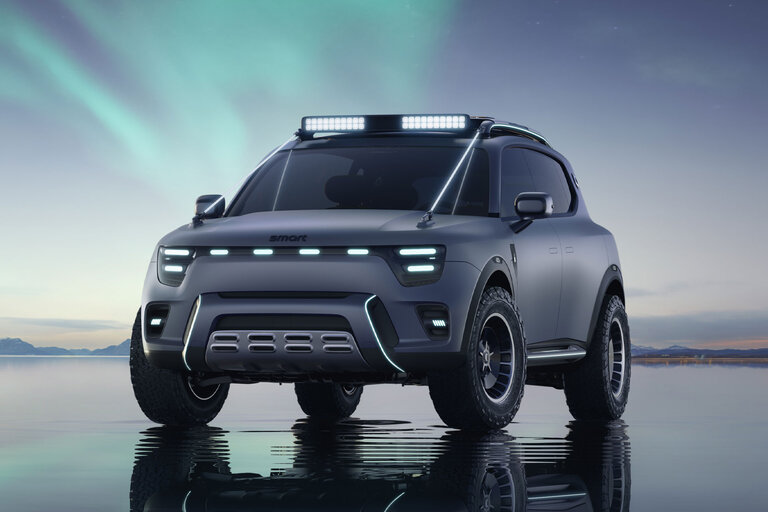
- New-vehicle sales were down in 2020 to levels not seen since 2012, but they’re in a recovery mode now that leaves the industry hopeful for next year.
- Truck and SUV sales saved the numbers from being much more dire, especially in the last quarter and the month of December.
- Dealer inventories are still constrained, and as a result, deals on new vehicles will be hard to come by.
Automakers have emerged from 2020, a challenging and unprecedented year, and some did so on a high note. Eight months weren’t enough for the industry to fully recover from the low point in the spring, but a strong, if somewhat unexpected, recovery began in the summer and continued through December, even as the COVID-19 pandemic has surged across the country.
The U.S. market is now estimated to see sales finish around 14.5 million, a much stronger result than the 13 million range that some analysts forecasted earlier this year. Overall, sales are estimated to be down 14.9 to 15.5 percent, bringing sales to the lowest levels since 2012. The decrease was lessened because retail sales were strong, although fleet sales slowed considerably.
Shutdowns earlier in 2020 were part of the reason sales were down, of course. “This year presented the economy and the auto market with incredible challenges. As we close the year, it is remarkable to see how well the industry performed,” Cox Automotive’s chief economist Jonathan Smoke said in a note. “Retail vehicle sales will end the year down less than 10 percent despite losing six weeks of the most important time of the year.”
GM
General Motors finished the year down 11.8 percent compared to last year after finishing the fourth quarter with a sales growth of 4.8 percent. Pickups, as has been the case for most of the year, were a bright spot for GM; Silverado pickups saw annual sales increase 3.2 percent and Sierra pickups by 8.9 percent. Retail sales for GM were down only 6 percent for the year.
Hyundai
Hyundai sales grew 2.3 percent in December as compared to last year thanks to its popular—and recently expanded—crossover lineup, including the Kona, Santa Fe, and Venue. Annual sales for the Korean automaker saw a decrease of 9.7 percent from 2019, a drop which is largely attributable to reduced fleet vehicle sales, as retail sales for Hyundai increased by 1 percent this year.
J.D. Power estimates that trucks and SUVs are set to make up 79.1 percent of new-vehicle retail sales, up from 75 percent a year ago. Strong truck and SUV sales have underscored many of the results seen throughout this year, a continuation of a trend seen in past years.
Mazda
Mazda, largely thanks to the new CX-30 which went on sale late last year, saw sales grow by 0.2 percent and 18.2 percent in December as compared to last year. Although Mazda’s most popular vehicle, the CX-5, had sales contract by 5.9 percent this past year, the automaker’s largest offering, the CX-9, had a sales increase of 2.2 percent.
Tesla
Tesla, which only reports global—not U.S.—sales numbers, saw considerable growth in its total deliveries, which came in at just under 500,000—CEO Elon Musk’s goal for the year—at 499,550, an increase of 35.9 percent. The Model 3, Tesla’s most popular vehicle, appears to have seen further growth in sales, but Tesla combines Model 3 and Model Y sales numbers so it’s difficult to attribute the growth to one vehicle or the other.
What to Expect Now
GM chief economist Elaine Buckberg said in a statement that the automaker expects the pandemic to continue to put pressure on the auto industry throughout the year, but for that to ease beginning in the spring. “Widening vaccination rates and warmer weather should enable consumers and businesses to return to a more normal range of activities, lifting the job market, consumer sentiment, and auto demand.”
Although the better part of a year now separates the industry from the shutdowns in the spring, inventories haven’t recovered, largely due to pent-up demand. That has translated to early 2021 still not being an optimal time to buy a car, since dealers aren’t pressed to move outgoing model year vehicles off their lots.
“It’s certainly not much of a buyer’s market right now: Inventory is still in short supply in certain areas, and automakers and dealers aren’t faced with the pressure to use big discounts to clear out their lots like they normally do at this time of year,” Jessica Caldwell, Edmunds executive director of insights, said in a note.
This content is imported from {embed-name}. You may be able to find the same content in another format, or you may be able to find more information, at their web site.
This content is created and maintained by a third party, and imported onto this page to help users provide their email addresses. You may be able to find more information about this and similar content at piano.io
Source link





